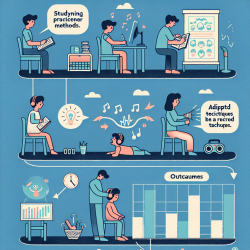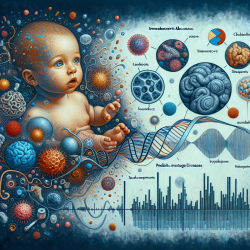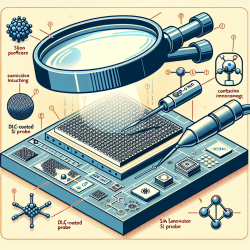Introduction
The field of autism research is continuously evolving, with a growing focus on early detection and intervention. The research article "Infants at risk for autism: a European perspective on current status, challenges and opportunities" provides valuable insights into the early identification of autism spectrum disorders (ASD) in infants. This blog explores how practitioners can leverage these findings to improve their skills and encourage further research.
Current Status of Early Autism Research in Europe
Autism spectrum disorders are characterized by impairments in social interaction, communication, and repetitive behaviors. Traditionally, diagnoses were not made until children reached the age of 3 or 4. However, recent studies have highlighted the importance of early detection, which can lead to early intervention and potentially improved outcomes.
In Europe, the ESSEA (Enhancing the Scientific Study of Early Autism) initiative aims to advance the understanding and treatment of early signs of autism. By bringing together expertise from cognitive neuroscience and clinical sciences, ESSEA seeks to establish European practice guidelines for early identification and intervention.
Implementing Research Outcomes
Practitioners can enhance their skills by integrating the following research outcomes into their practice:
- Utilize Screening Tools: Instruments like the CHecklist for Autism in Toddlers (CHAT) and the Infant Toddler Checklist (ITC) can help identify early signs of ASD in infants as young as 18 months. Practitioners should familiarize themselves with these tools to enhance early detection efforts.
- Focus on Behavioral Markers: Research indicates that infants later diagnosed with ASD often exhibit signs such as reduced eye contact and social engagement by 12 months. Practitioners should be vigilant in observing these markers during assessments.
- Collaborate with Research Networks: Engaging with initiatives like ESSEA can provide practitioners with access to the latest research, technologies, and methodologies in early autism detection. Collaboration can also facilitate the sharing of best practices and resources.
Encouraging Further Research
While significant progress has been made, challenges remain in early autism research, including funding limitations and recruitment difficulties. Practitioners are encouraged to contribute to research efforts by:
- Participating in Studies: Joining research networks and participating in studies can provide valuable data that contributes to the understanding of early autism.
- Advocating for Resources: Practitioners can advocate for increased funding and resources to support early autism research and intervention programs.
- Educating Families: Raising awareness among families about the importance of early detection and intervention can lead to earlier referrals and participation in research studies.
Conclusion
The European perspective on early autism research offers valuable insights and opportunities for practitioners. By implementing research outcomes and engaging in further research, practitioners can contribute to the advancement of early autism detection and intervention. For those interested in exploring the original research paper, please follow this link: Infants at risk for autism: a European perspective on current status, challenges and opportunities.










